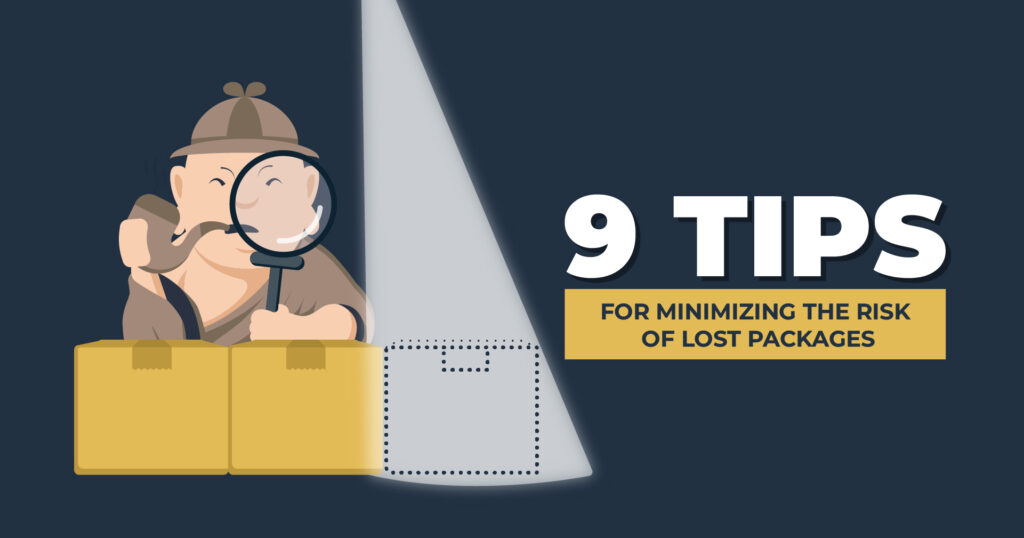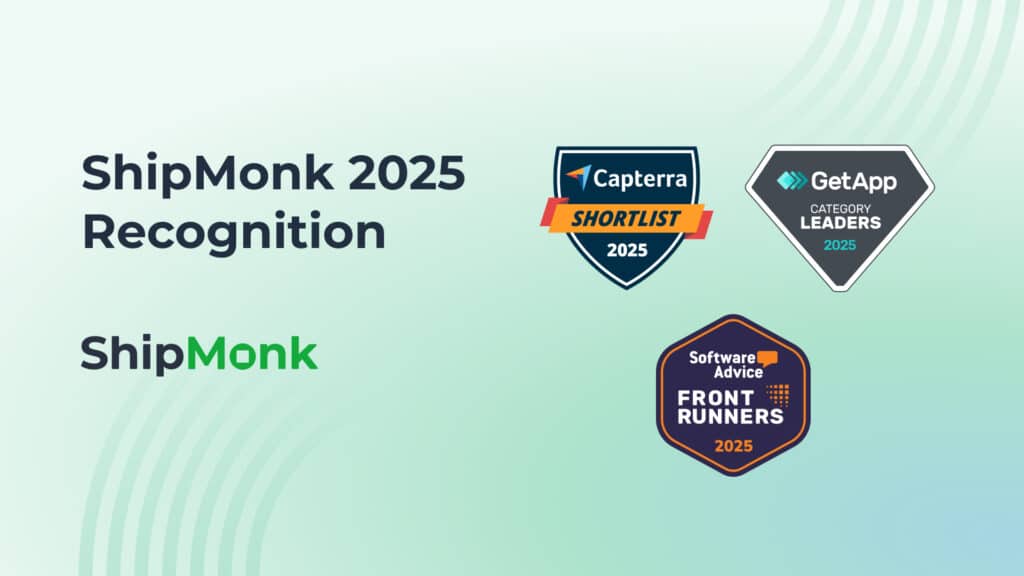You’re watching, waiting, anticipating . . . but no dice; the package you’ve been expecting does not arrive at your door. It’s been a while since you placed your ecommerce order so it seems like it may be time to face facts. Your package is lost. Nooooo!
Lost packages are a worst-case scenario for all ecommerce business owners, but that doesn’t mean they’re completely unavoidable. In fact, there are many steps you can take before an order ships to make sure it doesn’t go adrift in the cardboard sea. Keep reading for the 411 on lost packages: why they happen, what they mean for your ecommerce business, and how to stave them off.
What Causes Lost Packages?
There are two main reasons why packages get lost: a problem with the packaging itself or a problem with the shipping label. We’ve talked about the importance of good packaging in the past, and it’s not just about looking pretty or being branded appropriately for your ecommerce business. Packaging that is improperly-sized, lacking in the appropriate dunnage, or not weather-resistant is more vulnerable to being damaged or lost. Meanwhile, if a shipping label is incorrect (in terms of sender or receiver information), blurred, or even peeled slightly, an order can easily veer off course.
Of course (see what we did there?) it’s not always on you. According to a report published by the New York Times, 1 in 10 packages disappear daily. A lost package could very well be the shipping carrier’s fault, which is why you, as an ecommerce business owner, should conduct your investigation on a case-by-case basis. If there’s a common pattern that you can fix (such as too-big packaging or packaging that’s not holding up to the elements), then implement changes to how your ecommerce orders are being sent out. If there is no consistent trend, it’s best to speak to your shipping carrier directly to see if lost packages are part of a larger issue. In that case, opt to use a different shipping carrier or shipping option or work with a 3PL to find alternative solutions
Why Are Lost Packages Bad?
The physical item in an ecommerce order isn’t the only thing that gets lost when a package goes missing; you can add money, time, resources, and potentially returning customers to that list. Simply put, ecommerce orders that don’t arrive in the approximated delivery window and/or require buyer intervention to trigger a resend hurt your bottom line. That being said, while mistakes are bound to happen eventually, the important thing is to prevent them as much as possible and rectify mishaps right away.
9 Tips for Minimizing the Risk of Lost Packages
An ounce of prevention is worth a pound of… not losing your packages? We’ll figure that one out later. Here are nine strategies for nipping the negative impact of lost packages in the bud.
#1 Choose the Right Packaging
Choosing the right packaging is an art and a science. Check to make sure your packaging isn’t too big or small, has all its empty spaces filled out, and is fairly weatherproof. Additionally, consider the custom packaging vs. plain packaging debate. On the one hand, custom packaging can make a box easier for a shipping carrier to keep track of. On the other hand, plain packaging can be advantageous for both anti-theft and privacy purposes. If you go with the latter, don’t worry; you can still have branded packaging underneath the outer Plain Jane cardboard layer.
Bonus: Want to go the extra mile? You overachiever, you. Test packaging for potential issues by dropping it, hosing it, etc. to see how durable your chosen delivery method is.
#2 Provide Address Verification to Customers
You know when you place an ecommerce order online, input your address, and get almost the exact same address suggested back to you, but with a few minor differences that are somehow more legible to shipping carriers? That step is super vital in reducing lost packages. As an ecommerce business owner, be sure to tack on that extra verification step to your checkout experience to help your shipping carriers and 3PL minimize loss and in-transit misplacement. Better safe than sorry!
#3 Create Valid, Secure Shipping Labels
In addition to confirming you have the right customer info when they place ecommerce orders, keep shipping labels with that info tightly adhered to packages. Don’t forget to label packages with other important info too, such as FRAGILE or TEMP. SENSITIVE. For clarity’s sake, a basic shipping label should always include:
- The return and destination address
- The package weight
- The package shipping class
- The tracking number with a scannable barcode
#4. Add More Shipping Options
You may want to offer a “Signature Required” option for ecommerce orders placed through your online retail site, especially for more sensitive or high-ticket items.
#5 Diversify Delivery Methods
Sometimes delivery to certain addresses isn’t possible or ideal. For customers, luckily our modern world has several alternatives, such as P.O. boxes (like from UPS and USPS) and package lockers (like Amazon Hub Locker). On the ecommerce business front, diversifying delivery methods is about offering an array of shipping options to customers, and having a range of shipping carriers in your supply chain to execute them. ShipMonk, for example, works with a range of shipping carriers to extend our delivery network to reach customers far and wide.
#6 Spread Out Inventory
Also key is having your inventory stored within more than one warehouse or fulfillment center across multiple strategic locations. Minimizing shipping zones that ecommerce orders have to travel through to reach customers reduces the risk of them being lost. ShipMonk has 11 global state-of-the-art fulfillment centers and counting, so ecommerce orders arrive at customer doors in shorter delivery windows. The shorter the amount of travel time, the less time for things to potentially go wrong.
#7 Track Orders
It’s vital that your ecommerce business, or the 3PL you work with, offers customers a way to track orders every step of the way. For more specific recommendations for tracking ecommerce orders be sure to check out ShipMonk’s full guide on the matter.
#8 Keep an Open Line of Communication
Communication, communication, communication — so vital that we had to say it thrice! Whatever you do, do not keep your customers in the dark about anything. Do they need second-by-second updates? Probably not. But looping them in with regular check-ins is non-negotiable for building trust and putting out fires, especially when it comes to potential delivery delays. In this area, it’s always best to err on the side of caution and communicate all major delivery status notifications to your customers while also having an internal way to look at the smaller, nitty gritty ones yourself as an ecommerce business owner if you do ever need to track a potentially lost package.
#9 Make Use of MonkProtect
We saved the best for last! Think of MonkProtect as your post-purchase BFF. This fully-integrated suite is a unique type of delivery protection designed by ShipMonk to help you elevate the post-purchase experience and address several of the previous tips we covered.
MonkProtect offers branded tracking so all those times that customers check on their ecommerce orders they can do it on a custom page for your ecommerce business vs. being redirected to a shipping carrier’s site. This customized onsite tracking (vs. carrier page tracking) feature increases branded impressions, potentially converting repeat order status visits into repeat purchases.
MonkProtect also has an automated claims portal that allows customers to easily report claims and merchants to quickly and efficiently address those needs. Ecommerce business owners can opt for automatic reshipment through ShipMonk or choose to process a refund. The pivotal point here is that claims are automatically handled unless they pose unique issues that require review and approval. This allows your ecommerce business to save invaluable time by working 10x faster than a manual claims processing setup.
Reducing Risk for Superior Satisfaction
Lost packages don’t have to be a consistent occurrence for your ecommerce business. Taking proactive, strategic steps can significantly minimize the risk of lost packages so you can safeguard your revenue and focus on surprising and delighting your customers. All the while, having a back-up plan for how to handle lost packages can protect you against damaging backlash.
ShipMonk is here to lend a helping hand in both areas by providing you with the 3PL management platform, diverse shipping options, and advanced facilities to minimize loss AND MonkProtect to cushion the blow if it does occur. Contact us today for a quote to see how you can leverage our powerful fulfillment technology and expertise to Stress Less and Grow More.





